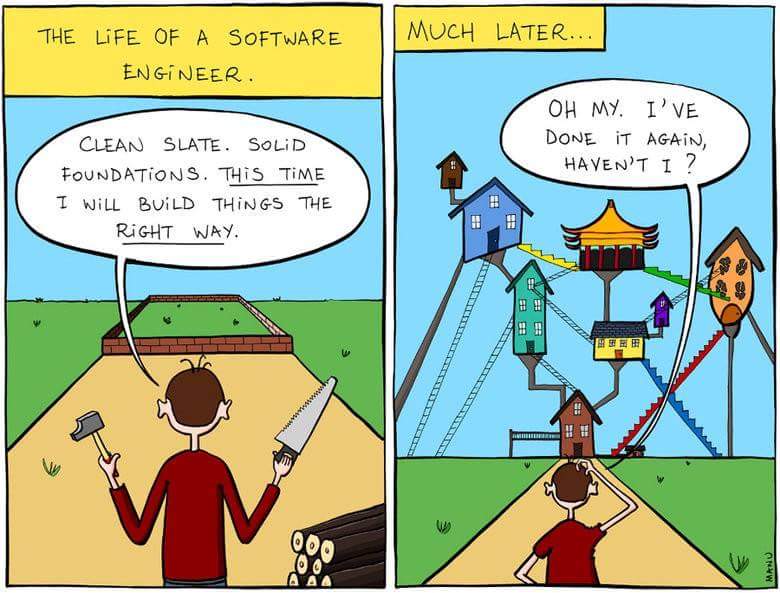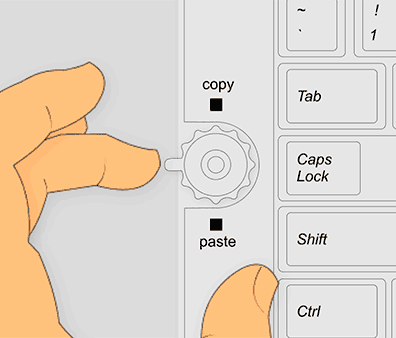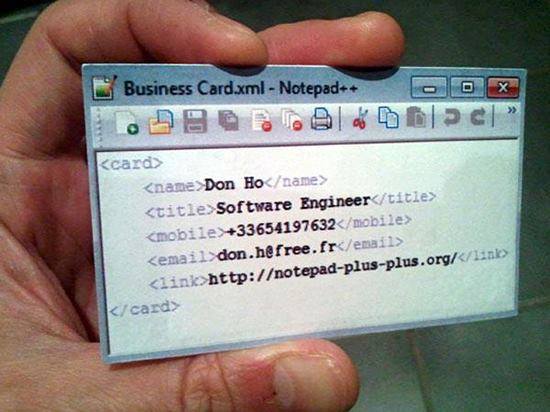Details
-
Aboutl33tc0d3r
-
SkillsPython
-
Github
Joined devRant on 9/16/2016
Join devRant
Do all the things like
++ or -- rants, post your own rants, comment on others' rants and build your customized dev avatar
Sign Up
Pipeless API

From the creators of devRant, Pipeless lets you power real-time personalized recommendations and activity feeds using a simple API
Learn More
-
Conversation today...
Guy: "Hey I need a real quick script to pull some values out of an XML document...is that possible?"
Me: "Uh...yeah that's pretty simple if that's all it has to do."
Guy: "Ok excellent I'll send you some files and documentation."
Me: "Ok so is this like a one time use thing or do you need to parse multiple of these?"
Guy: "Actually it needs to run all the time, on this specific PC, watch directories for any files that are added, then generate a XLSX files of the values, and also log information to a database. Etc"
Me: "Oh that adds quite a bit of complexity from what you originally said. It's going to take more time."
Guy: "But you said it was easy."
Well fuck you...12 -
RandomGuy: I can't seem to play some videos on my laptop. Can you help?
LinuxPro: You have to install Arch Linux to do that. Windows 10 sucks.25 -
If Doctors Were Like Coders
(cross-posted from https://medium.com/@c09b6133a238/...)
Problem: The patient has a broken leg.
Solution:
1. Ask the patient to reproduce the exact scenario that resulted in the broken leg. Watch closely to see if the leg breaks again. Check for consistency by repeating the scenario a few more times.
2. Explain that this isn’t an intended use case for the leg, and besides, it only affects one person. Ask the patient if, all things considered, he really wants to prioritize his broken leg over your other work.
3. Point out that the patient’s other leg performs just fine under the same circumstances. Ask if he can use his other leg instead, at least as a workaround.
4. Attach several accelerometers to the broken leg and break it again. Stare at the data received from the accelerometers, then shrug and declare it useless.
5. Decide that the patient’s problem must be in his spleen. After all, that’s the only part of his body you don’t really understand.
6. Track down the people who created the patient. Ask them if he’s ever had spleen problems before. When they seem confused, explain that he has a broken leg. Ignore them when they tell you that the spleen they created could not possibly cause a broken leg.
7. Ask Google where a person’s spleen is. Spend half an hour reading the Wikipedia article on Splenomegaly.
8. Open the patient and grumble about how tightly-coupled his spleen and circulatory system are. Examine the spleen’s outer surface to see if there are any obvious problems. Inform him that several of his organs are very old and he should consider replacing them with something more modern.
9. Compare the spleen to some pictures of spleens online. If anything looks different, try to make it look the same.
10. Remove the spleen completely. See if the patient’s leg is still broken. If so, put the spleen back in.
11. Tell the patient that you’ve noticed his body is made almost entirely out of cellular tissue, whereas most bodies these days are made out of cardboard. Explain that cardboard is a lot easier for beginners to understand, it’s more forgiving of newbie mistakes, and it’s the tissue franca of the Internet. Ask if he’d like you to rebuild his body with cardboard. It will take you longer, but then his body would be future-proof and dead simple. He could probably even fix it himself the next time it breaks.
12. Spend some time exploring the lymph nodes in the patient’s abdominal cavity. Accidentally discover that if the patient’s leg is held immobile for six weeks, it gets better.
13. Charge the patient for six weeks of work.14 -
I've never heard an Apple person say "laptop" or "phone". They always specify that it's a "MacBook" or "iPhone".
Just an observation.13














